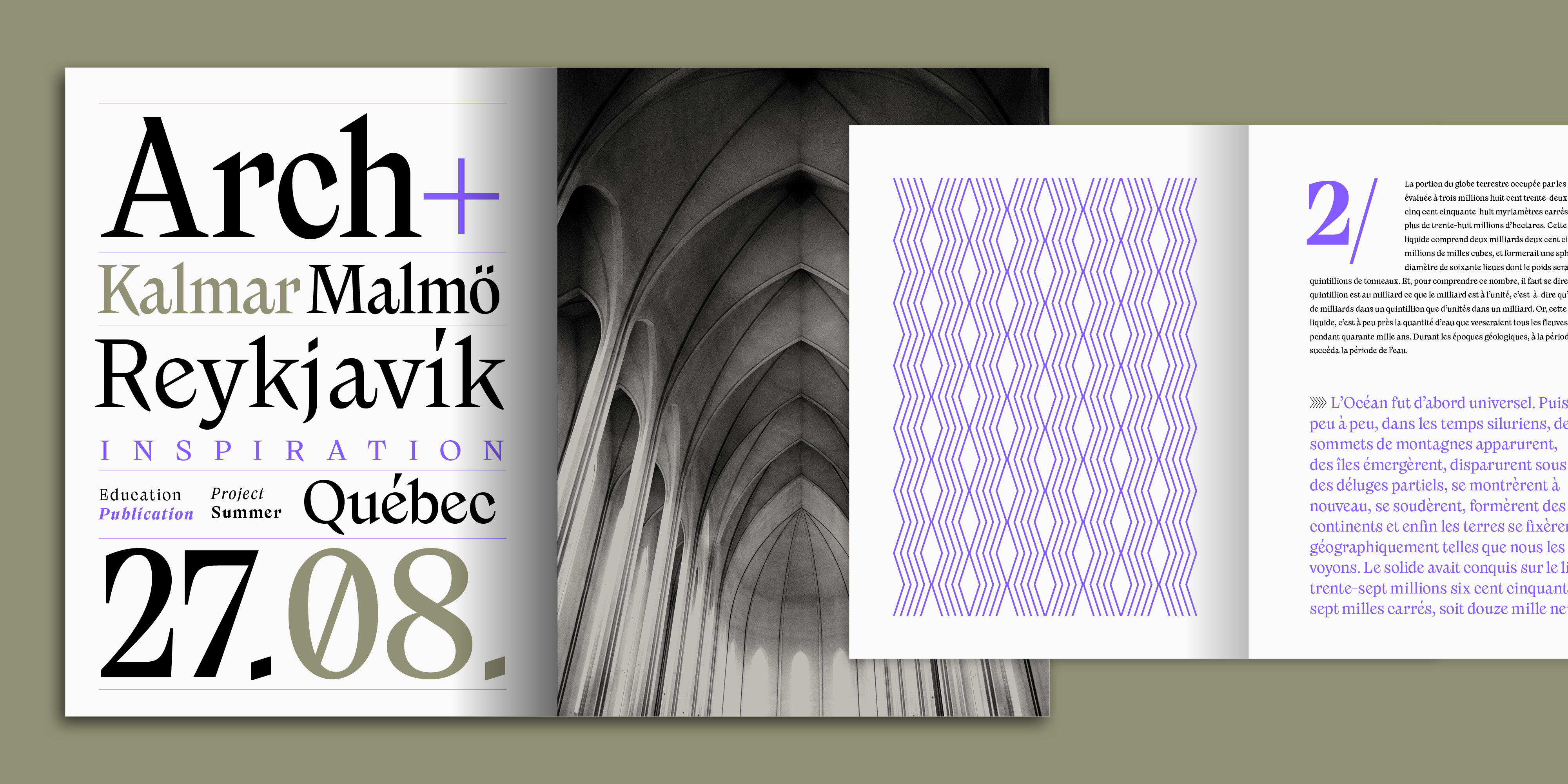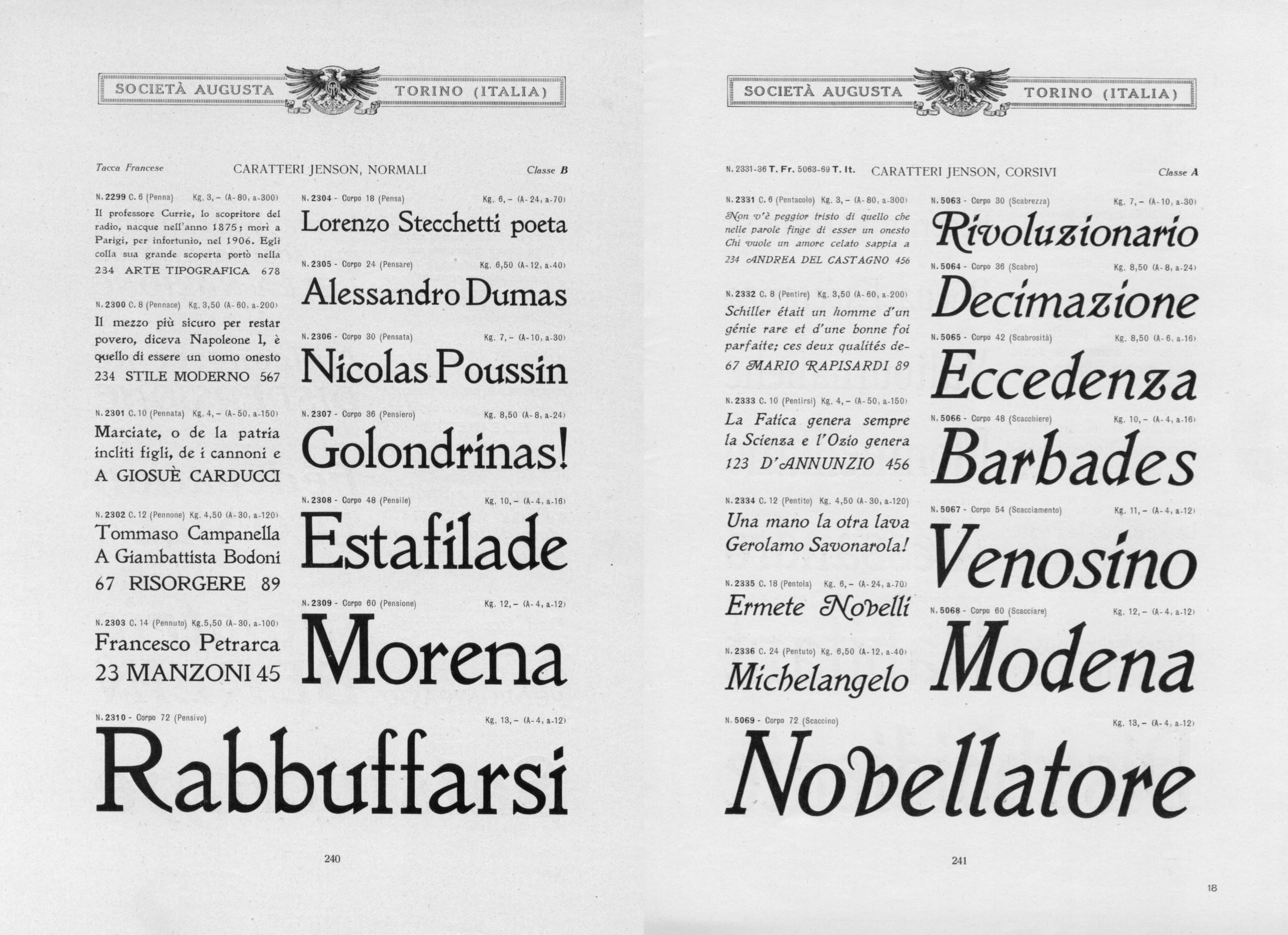uring her TypeMedia master’s degree at KABK in The Hague, the designer, Franziska Weitgruber was tasked with designing a revival typeface. For her project, she chose Veronese by Monotype. Veronese is a mechanized version of the Golden Type by William Morris from 1925, which in turn was a rough interpretation of Nicolas Jenson’s earlier Print types of the 1470s. She was not entirely satisfied with the result, however, and found her interpretation too cool and too rigid.
Driven by her own aspirations and ambition, she later tried to reinterpret another Jenson Model from the Renaissance. She found Nebiolo’s Jenson in an almost 90-year-old specimen from the legendary Turiner Foundry. Beguiled by the wild and liveliness of the typeface, she began to digitize the bold weight.

